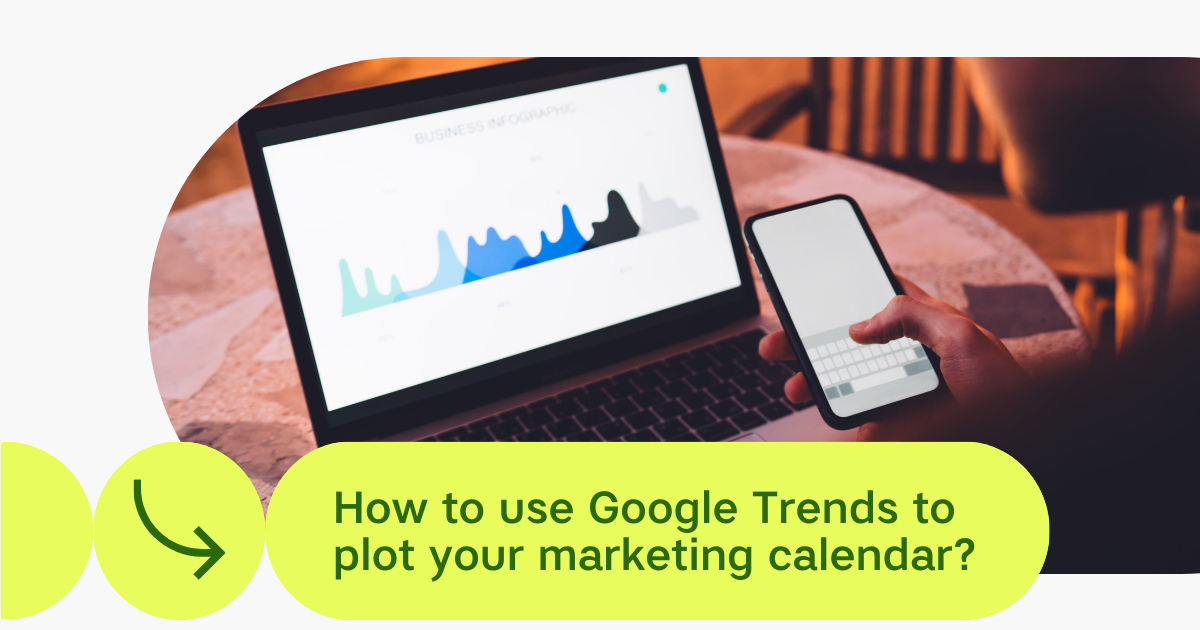At The Dot Society we are a strong believer in adapting your marketing calendar in an agile way to come with relevant messages at a certain time in the season.
We use google trends to spot seasonalities and important trends in a specific market and adapt flexible to this. By using Google Trends to search for competing brands, compare product features, or identify top queries within a specific industry, you can discover products or features that are valued or more demanded by your target audience. You can use this information to improve your offerings and messaging, create targeted ads, and capture more customers’ attention and generate more sales.
In this article we deep-dive in the possibilities of Google trends in order to reach the following goals:
- Identify seasonal trends before the season begin
- Find out where your target market is located
- Identify trends and important keywords
- Check your competitors
Identify seasonal trends before the season begins
One of the easiest ways to use Google Trends is to identify seasonal trends before the season begins. Why is it necessary to identify the trends ahead of time? Because that gives you time to plan your promotions and produce content. If you identify a trend right now, it might be over by the time you start making changes. Then, you’ve wasted all that effort. But how can you identify trends before they happen? That’s where the “seasonal” part comes into play. Seasonal trends tend to repeat themselves.
For example, let’s say you’re running an online site selling shoes. You notice that the relative popularity of the search term “sandals” spikes every season starting from March as people go shopping for the upcoming season. In that case, you’d want to promote your selection of this product category, when people are most likely to buy.
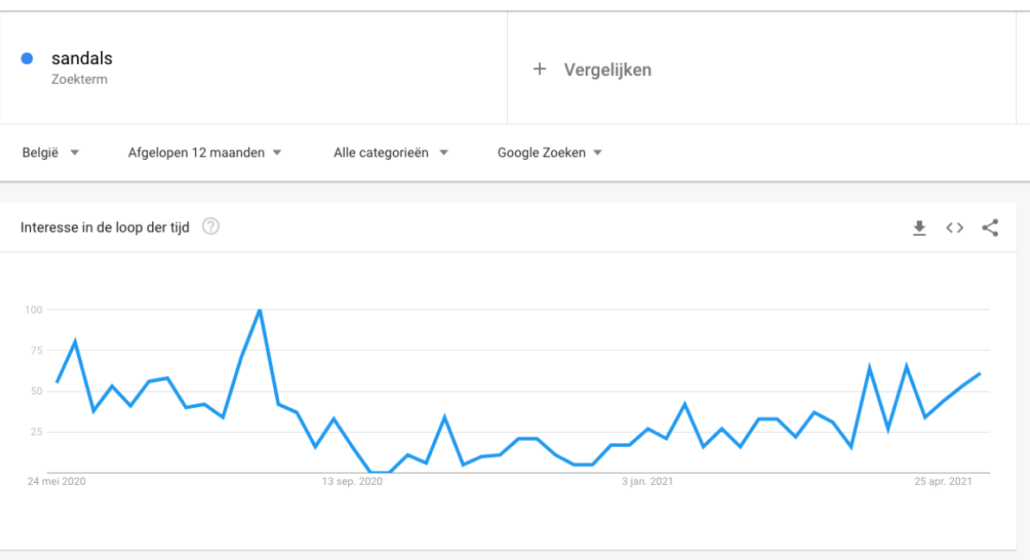
Find out where your target market is located
As we’ve seen, Google Trends not only shows you what people are searching for, it also shows you where they’re located. If you’re running a business with a customer base that’s scattered all over Europe, use that info to identify where your hottest keyword opportunities are located. Then, target people in those communities. Fortunately, Google Ads allows you not only to target based on keyword, but also based on location. Put that opportunity together with the info that Google Trends is offering and you can produce some laser-like targeting that should give you a positive ROI.
Step 1: Go to explore
Step 2: Type in a certain keyword and see the top 10 countries
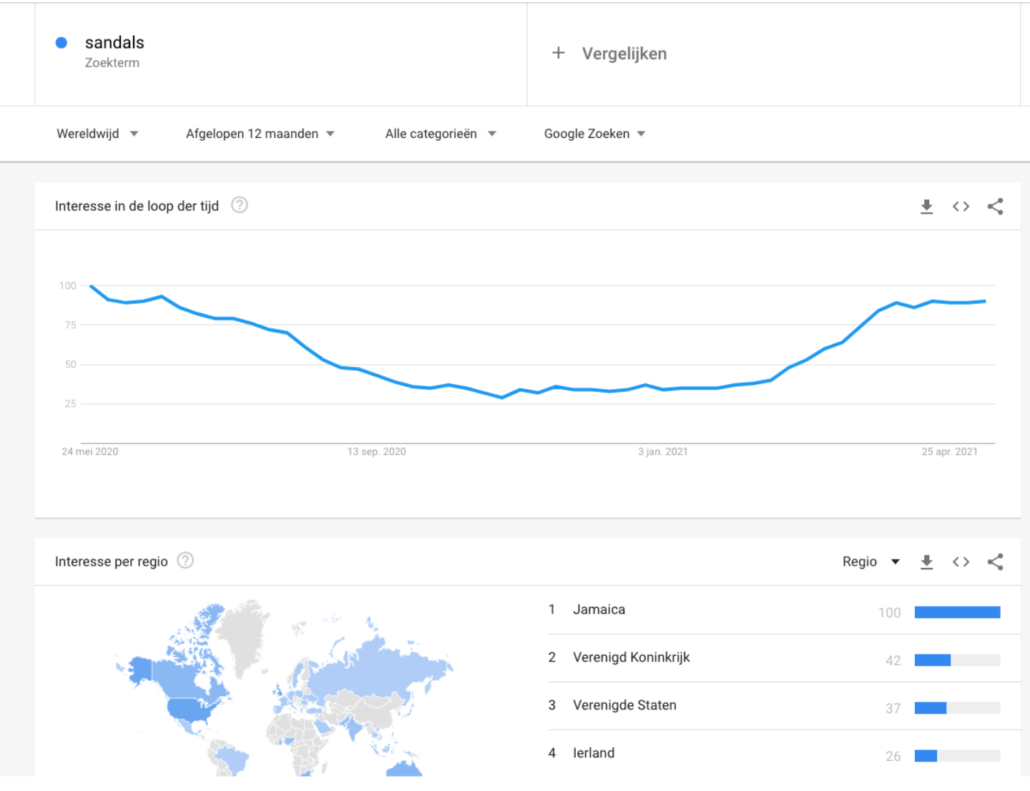
Identify trends and important keywords
Use Google Trends to find popular topics in your market
Google Trends can help you discover popular topics you might have missed in your industry. Here’s how you can find popular topics and search queries in your industry.
Step 1:Go to trends.google.com
Step 2: Navigate to Explore interesting search queries and see the general trends in your country:
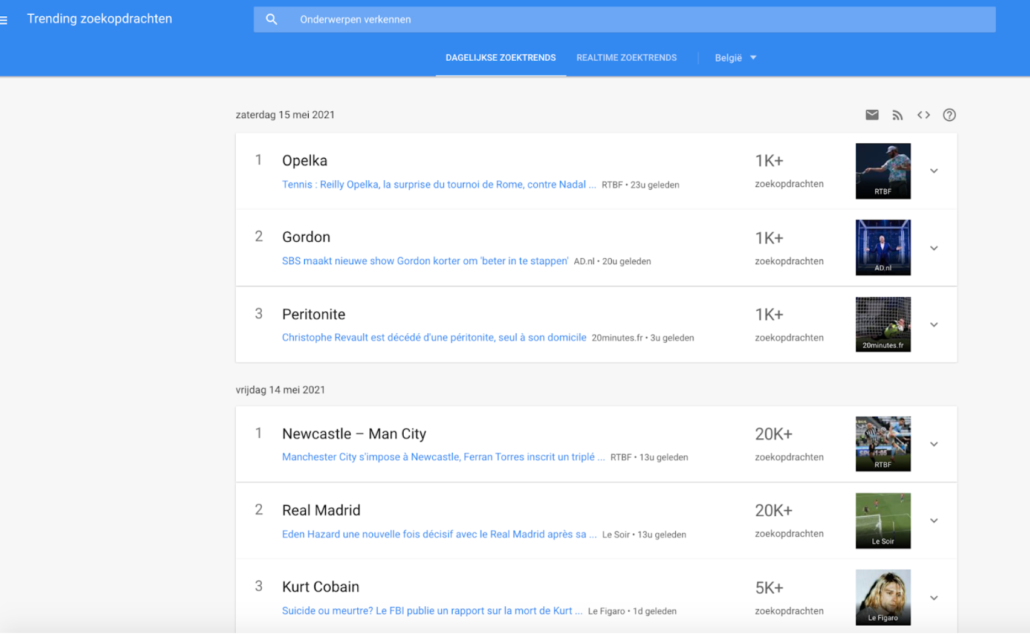
Use Google Trends to find popular topics in your industry
Step 1: go to trends.google.com
Step 2: Select the Region you want to explore. You can focus on a whole country, state or a city – possibilities are endless here.
Step 3: Choose the time range you want to research. If you want to see more overarching topics of your industry, choose a longer time frame and if you want to discover newer topics or queries, choose a lesser time frame.
Step 4: Choose your category. For example, if you are looking for sandals, you are in the industry of shopping.

Step 5: Explore topics and search queries. You might find completely unrelated things, especially within the Rising category. It’s just showing what people interested in your chosen category are also searching for. You will also see related subjects and some brands popping up. This gives you a good idea about the possible competitors.
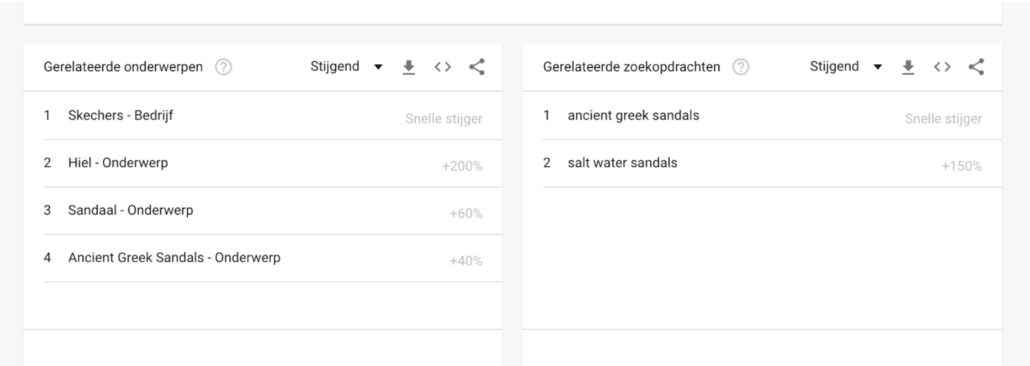
Determine What Consumers are Searching About Competing Brands
Enter a competitor’s name in the Topic box and discover the search volumes of your competitors. You can compare two or more brands next to each other to see the popularity in a certain market.
For example: Adidas vs Nike:
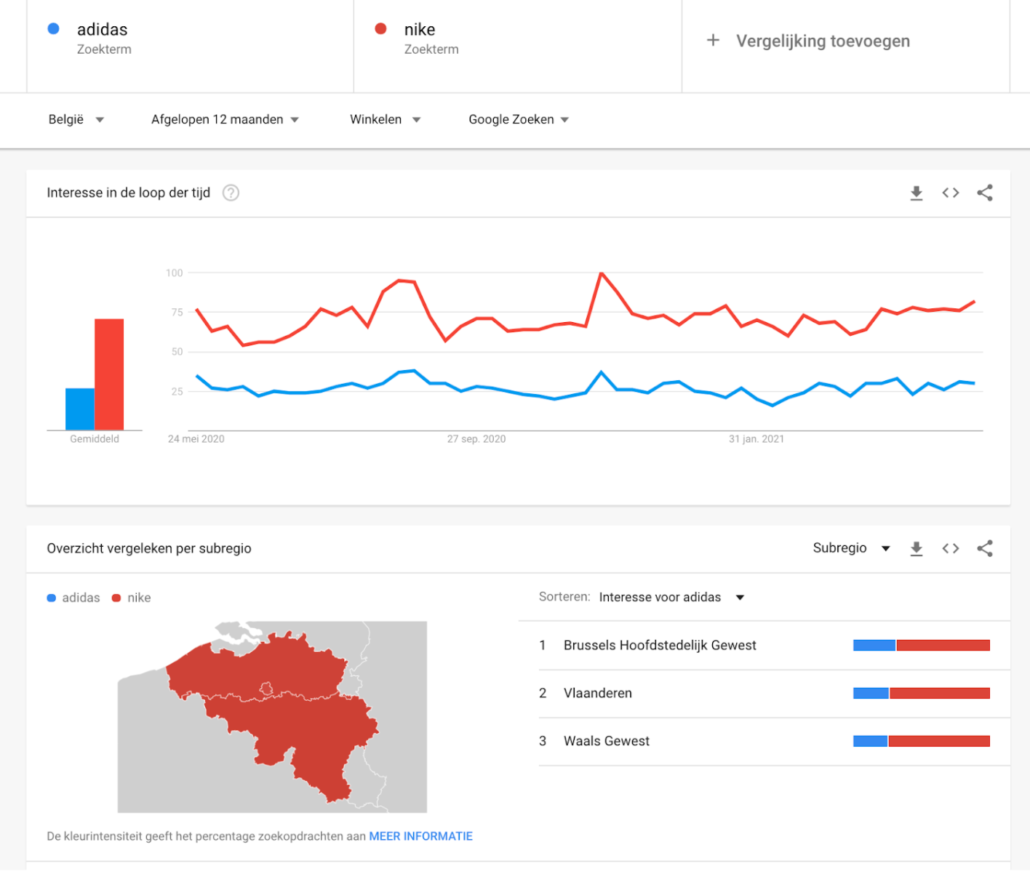
Tip: Check your competitors and see which related keywords are popping up to include in your SEO and SEA strategy
If you have any questions about the article or using Google Trends for market research, feel free to reach us!
This post is also available in: Dutch

